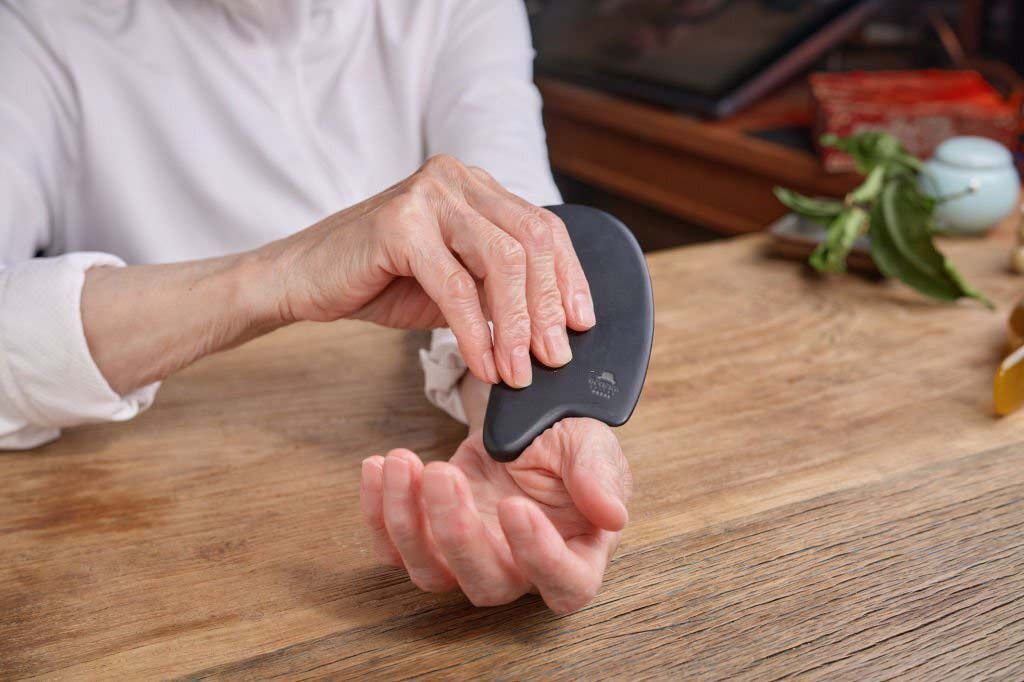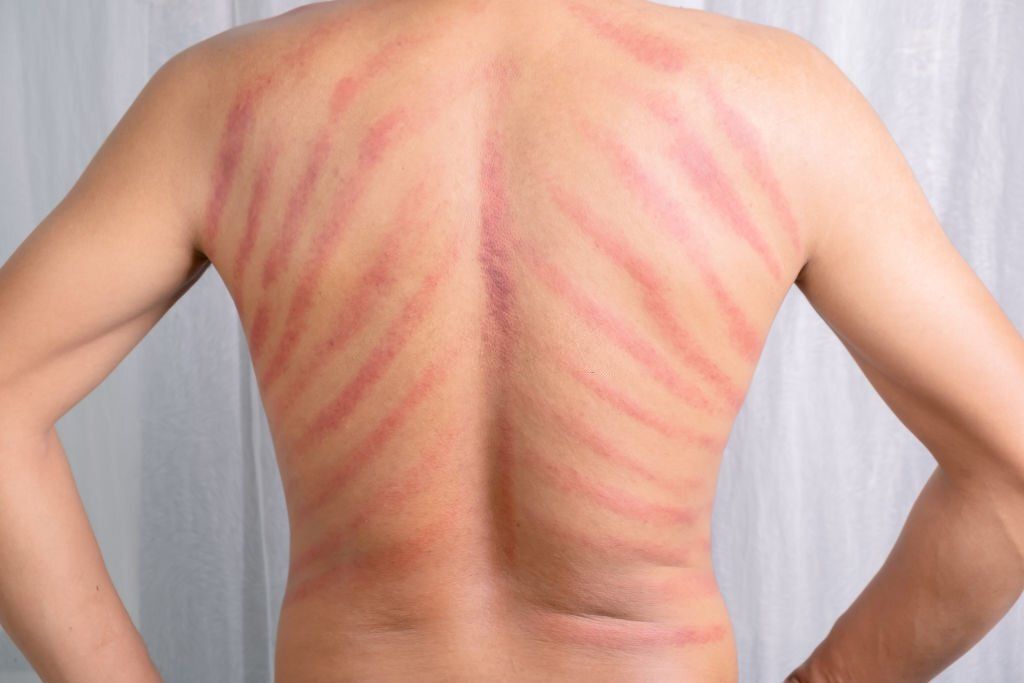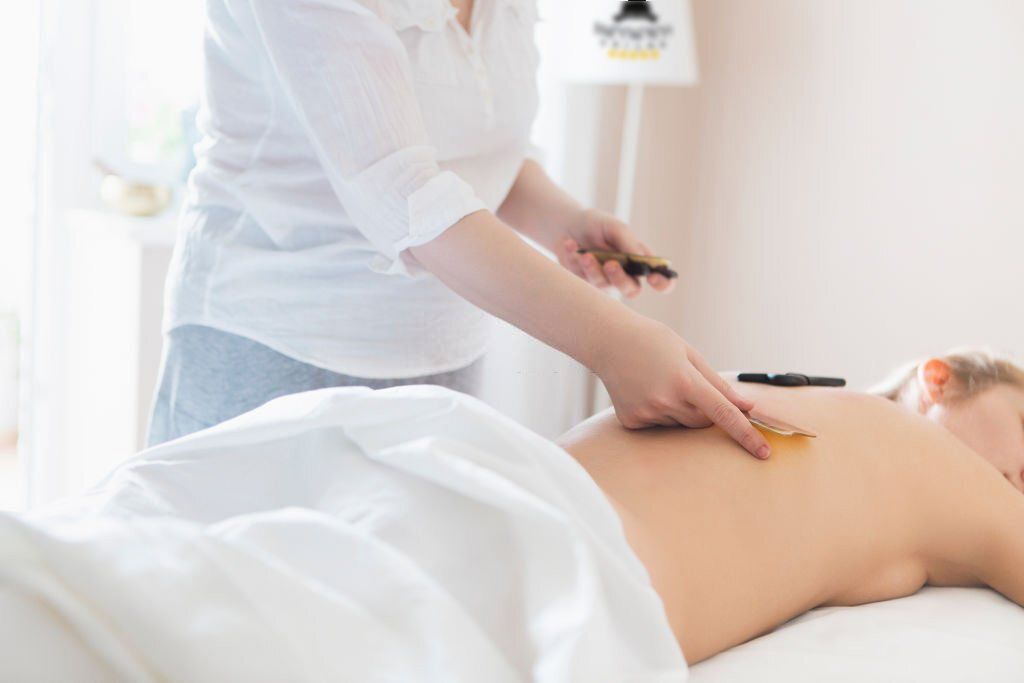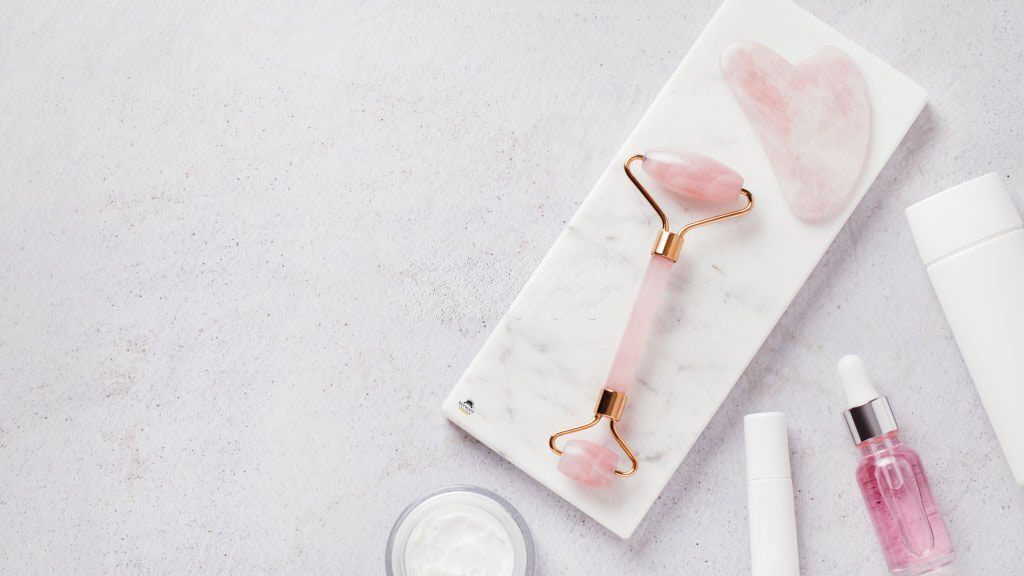This article is reviewed, corrected, and approved by: Julia Weiss CNP| RN | MPH
Have you heard of gua sha? It's a centuries-old healing technique from East Asia that involves using a smooth tool to gently scrape the skin, promoting blood circulation and releasing stagnant energy. I’m about to share insights about gua sha before and after and many more, as it might be helpful for you.
History of Gua Sha
Guasha is an ancient Chinese holistic healing practice that uses scraping techniques to improve circulation, relieve pain, and promote healing. The word "guasha" literally means "scraping sand" in Chinese, and it is thought to have originated in China over 2,000 years ago.
What Are The Purpose Of Using Gua Sha?
Gua sha is typically performed using a smooth, flat tool made of stone, jade, or other semi-precious material. The tool is gently scraped across the skin in long, smooth strokes.
There are numerous techniques for guasha, all of which can be applied to various health conditions. Guasha is commonly used to treat the following conditions:
- Facelift: Guasha is mostly used to tone the face and tighten facial muscles and puffiness of the face.
- Pain: Guasha tools can be used to relieve pain in the muscles, joints, and bones.
- Inflammation: Guasha can be used to reduce inflammation in the body.
- Clogged meridians: Gua sha can be used to clear blocked meridians, which are the pathways of energy in the body.
- Acne: Using a tool called body guasha can help make your skin look better and prevent acne on the face.
- Stress: Gua sha can help with stress relief and relaxation.
What Are The Benefits Of Using Gua Sha?

Gua sha is believed to offer several potential benefits, although scientific research on its effectiveness is limited. Here are some commonly cited benefits associated with gua sha:
Pain relief
Gua sha is often used to alleviate muscle and joint pain, especially in the back, neck, and shoulders. The scraping action is thought to stimulate blood flow, relax muscles, and relieve tension, which may help reduce pain and discomfort.
Improved circulation
The scraping motion of gua sha is believed to promote blood circulation in the treated areas. Enhanced circulation can potentially contribute to improved oxygen and nutrient delivery to the tissues, aiding in the healing process and promoting overall health.
Reduction of muscle tension
Gua sha's gentle pressure and scraping action may help relax tight muscles, release muscle knots, and alleviate muscle stiffness and tension. This can lead to increased flexibility, range of motion, and a sense of relaxation in the treated area.
Detoxification and lymphatic drainage
Gua sha is thought to stimulate the lymphatic system; it aids in the removal of waste and poisons from the body. By promoting lymphatic drainage, gua sha may help improve detoxification processes and reduce swelling or inflammation in the tissues.
Facial rejuvenation
Gua sha is sometimes used as a facial treatment to promote healthier skin. It improve blood flow to the face, stimulate collagen production, and encourage lymphatic drainage, potentially resulting in a brighter complexion, reduced puffiness, and a more toned appearance.
While some people report benefits from gua sha, scientific evidence is limited and individual experiences may vary.
Risk Factors of Gua Sha

Although gua sha can be safe if done correctly, it's important to be aware of potential risks and precautions:
- Bruising and skin irritation: Excessive pressure or friction on the skin can result in reddening or pinkish discoloration, in some cases, even bruising. Nevertheless, the bruising is typically transient and dissipates on its own after a few days.
- Pain or discomfort: Depending on the pressure and technique used during gua sha, some individuals may experience pain or discomfort during the treatment. It's important to communicate with the practitioner and let them know if the pressure is too intense.
- Risk of infection: Failing to adhere to appropriate hygiene practices may result in the possibility of developing a skin infection. It is crucial to ensure that the gua sha tools and the practitioner's hands are clean and sanitized before the treatment.
- Pre-existing health conditions: Gua sha may not be suitable for individuals with certain health conditions, such as bleeding disorders, active infections, open wounds, sunburn, or skin conditions like eczema or psoriasis. You may talk with a professional expert before attempting to use gua sha, especially if you have any pre-existing health issues.
- Lack of scientific evidence: While gua sha has a long history in traditional medicine, scientific research on its effectiveness and safety is limited. It's important to approach gua sha with a balanced perspective and not rely solely on anecdotal claims.
Gua Sha Before and After

Step 1: Preparation
You may need to remove any clothing covering the areas to be apply, such as your back, shoulders, or face. The practitioner may provide you with a gown or towel to wear during the session.
Step 2: Discussion and assessment
You may share about your medical history, any specific concerns or symptoms you have, and your expectations from the process. They may also assess the condition of your skin or any areas of pain or tension.
Step 3: Explanation
The practitioner should explain the gua sha technique, its purpose, and how it will be performed. They may also discuss any potential side effects or temporary marks that may occur.
Step 4: Informed consent/decision
You may be asked to provide consent for the treatment, acknowledging that you understand the procedure and potential risks.
Step 1: Temporary marks
Gua sha often leaves temporary marks on the skin, such as redness, bruising, or petechiae. These marks, known as "sha," can vary in intensity and typically fade within a few days. The intensity and duration of marks can depend on the pressure applied during the session.
Step 2: Sensations
You may experience a variety of sensations after gua sha, including warmth, relaxation, or mild soreness in the treated area. Some individuals report feeling energized or more mobile after a session.
Step 3: Hydration
It is important to stay hydrated after gua sha as the treatment may increase fluid circulation and promote detoxification. Drinking water can support the body's natural cleansing processes.
Gua Sha Tools

Many gua sha tools can be easily found on the market. Suck as body gua sha tools, guasha wood sticks, gua sha body and face oil, guasha neck massaging tools, and more.
Either you can buy tools, or you can take service from-
- Jade Gua Sha Tool: This tool is made of jade, which is a semi-precious stone that is believed to have healing properties.
- Rose Quartz Gua Sha Tool: This particular tool is crafted using rose quartz, a semi-precious stone that's reputed to possess healing properties.
- Stainless Steel Gua Sha Tool: The tool is crafted from high-quality stainless steel, a sturdy and long-lasting material that is effortless to maintain and keep clean.
Shocking Gua Sha Before and After Results!
The Bottom Line
Now I am confident that you learned all the secrets of gua sha before and after. Guasha is a safe and effective treatment for many health and skin conditions. Some of the best face oil for gua sha are available on the marketplace, you can buy it try by yourself.
If you don’t know how to use it, you may find Guasha tutorial video also available on the internet. Furthermore, if you want to try gua sha for the first time, you may also talk with a trained practitioner first. For safe and effective gua sha, consult an expert practitioner to guide you based on your individual needs.


